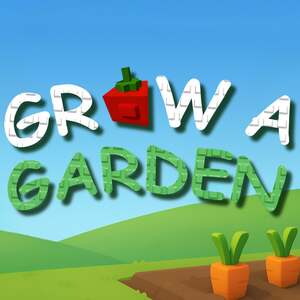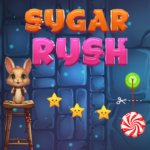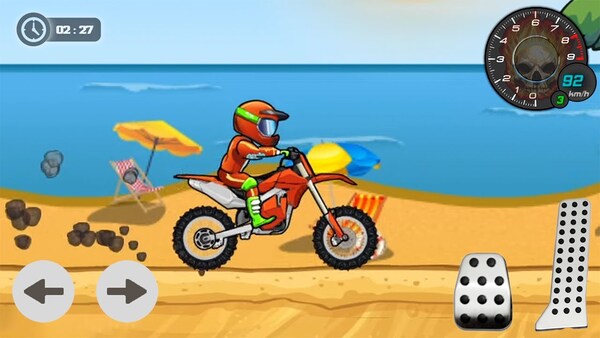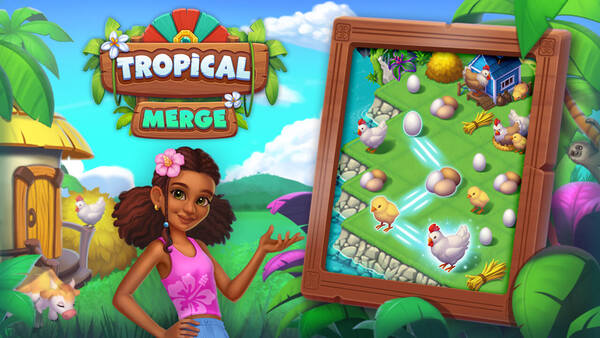Roblox Grow a Garden – The Definitive Expert Guide to Roblox’s Viral Gardening Phenomenon
Grow a Garden on Roblox has taken the gaming world by storm since its March 2025 release, shattering concurrent player records and redefining idle gameplay as a social experience. Designed by a young developer and rapidly evolving under high demand, the game thrives on simple planting mechanics, strategic mutation systems, and community-driven updates. Whether you're a first-time gardener or aiming for top-tier seed combos, this expert guide dives deep into every aspect: from gameplay fundamentals to monetization concerns, strategic insights, updates, community culture, and a balanced rating.
1. Origins & Roblox Grow a Garden game launch and record breaking
Grow a Garden launched in late March 2025, created by a teenage developer under the username BMWLux. Initially a personal project, it exploded onto the Roblox platform when coinciding with its peak popularity. Within weeks, the game shattered previous concurrent player records, reaching millions across the globe and earning attention for becoming the most-played experience on Roblox in history.
That wild ascent led to the developer partnering with established Roblox studios to scale infrastructure. Iterative updates have since rolled out quickly, sustaining momentum while ensuring stability. The origin story offers insight into community dynamics and the power of viral game design.
2. Gameplay Essentials & Roblox Grow a Garden seed planting mechanics
At its core, Grow a Garden delivers simple but satisfying seed planting: choose a seed pack, plant it in available plots, water, and wait to harvest. Each plant grows on a timer, yielding in-game currency used to buy more seed packs, tools, pets, and cosmetic upgrades. The key hook is that crops continue to mature even when the player is offline—a powerful factor in its addictive loop.
The basic mechanic is easy enough for new players to pick up quickly. However, depth is introduced through layering strategies—deciding which seeds yield the greatest returns, how many plots to expand, and when to press versus hold back on reinvesting or saving up for upgrades.
3. Roblox Grow a Garden pet systems and mutation mechanics
Beyond standard farming, pets offer mutation opportunities and gameplay boosts. Players collect pets ranging from Moon Cats and Raccoons to Crab and Dino companions. Each pet triggers different effects: Moon Cats encourage rare crop mutations, Raccoons may clone plants, Crabs pick up spare currency, and dinosaur-class pets offer dramatic growth synergies.
Mutations produce rare seeds—Moon Melon, Crystal Pumpkin, Lilac, and others—that spawn special plant types with higher yields. These mutations create cyclical engagement: plant, mutate, harvest, upgrade, repeat. When done strategically, pet combinations and sprinklers can transform a simple garden into a high-yield matrix.
4. Strategies & Roblox Grow a Garden beginner to endgame tips
Novice players should start with fast-growing, low-cost seeds to quickly generate currency and unlock sprinklers. Sprinklers automate watering and growth over time. Once a foundation is built, mid-level strategies include investing in bubbles for plot expansion and upgrading from common to divine seed packs to increase profit margin.
Endgame gameplay revolves around optimizing mutation chains—for example, combining Moon Cat with certain sprinklers and plots to maximize rare seed production. Private servers become beneficial here, protecting crops from theft and lag. Strategic use of pets, sprinklers, and plot layouts transforms gardening into a tactical progression game.
5. Seasonal Updates & Roblox Grow a Garden Summer and Zen expansion
The Summer update introduced new seed varieties, cosmetic items, and event mechanics—injecting fresh aesthetics and earning triggers. The following "Zen" update added mutated pets, calming audio themes, and mini-game content that rewarded participation and deeper engagement cycles.
These seasonal efforts reflect the developer team's attention to polishing experience, expanding player options beyond the core loop, and sustaining momentum. Players responded positively to the added polish and meaningful event rewards.
6. Monetization & Roblox Grow a Garden economy and ethical concerns
Grow a Garden adopts the typical Roblox monetization model: the basic game is free, but features like private servers, plot shields, premium seeds, and cosmetic items require Robux. While core gameplay remains accessible, certain mechanics—like stealing crops from other gardens—are blocked or sped up via premium purchase. Cosmetic-focused revenue keeps pay-to-win aspects in check, but ethical discussions have arisen around monetizing crop pace and social disruption.
Some critics argue that incentivizing crop theft and premium acceleration edges toward exploitative monetization, especially when children form a large share of the audience. However, the model remains transparent and optional.
7. Community & Roblox Grow a Garden social interaction and collaboration
Gardens are public by default, allowing players to visit each other’s spaces, trigger events via pets, trade mutation tips, or even sabotage others playfully. This social interaction is a core attraction—players invite friends to their gardens for help or competition.
Roblox community channels buzz with seeds tips, mutation guides, and pet combo strategies. Players host private servers for collaborative growth or competitive challenges too. This grassroots community involvement enhances retention and emergent gameplay.
8. Technical Performance & Roblox Grow a Garden game stability and scalability
After launch, its massive concurrent user count caused server lag and crash issues. Subsequent partnerships with experienced studios refined backend infrastructure, improving synchronization and reducing latency. The developers continue frequent updates to maintain performance as user numbers remain high. Future updates may incorporate player-suggested quality-of-life improvements and anti-lag measures.
9. Future Outlook & Roblox Grow a Garden roadmap and anticipated features
Looking ahead, Grow a Garden’s roadmap includes new seed pack tiers, mutation categories, and expanded cosmetic options. Private plot mechanics may evolve, giving lobbies for cooperative farming or competitive leagues. The game could integrate educational modules on botany or algorithmic mutation patterns. A growing young developer community is already creating tutorials and fan lore.
If the developers maintain update pace and community balance, Grow a Garden holds potential to evolve beyond an idle sim into a deep, evergreen Roblox phenomenon.
Conclusion
Grow a Garden is a compelling fusion of idle simplicity, strategic mutation mechanics, and community interaction. It broke records not just by viral reach but by building depth beneath its charming core loop. While premium features and RNG elements limit universal perfection, rewards come via smart pet usage, sprinklers, plot layout, and garden aesthetics.
For casual gardeners and hardcore strategists alike, Grow a Garden provides satisfying progression, social rewards, and the runtime flexibility needed for mobile engagement. Rated 8.5 out of 10 by our experts, it stands as a benchmark in idle metasocial design—a game poised for longevity and richness in the years ahead.































